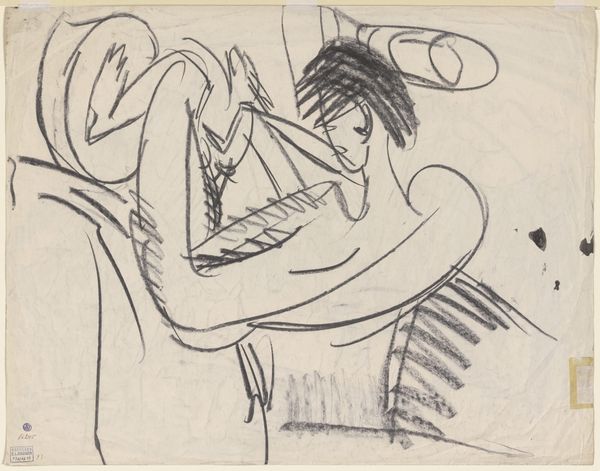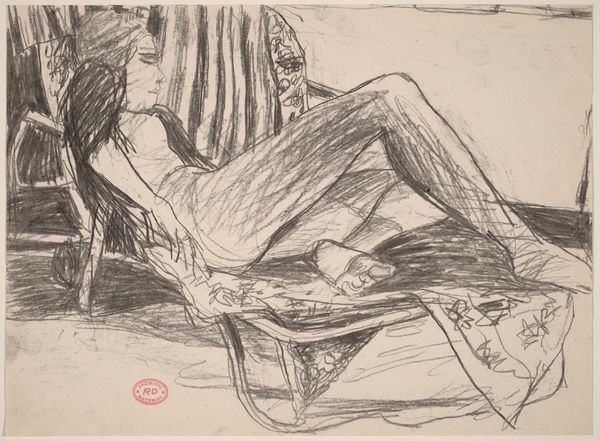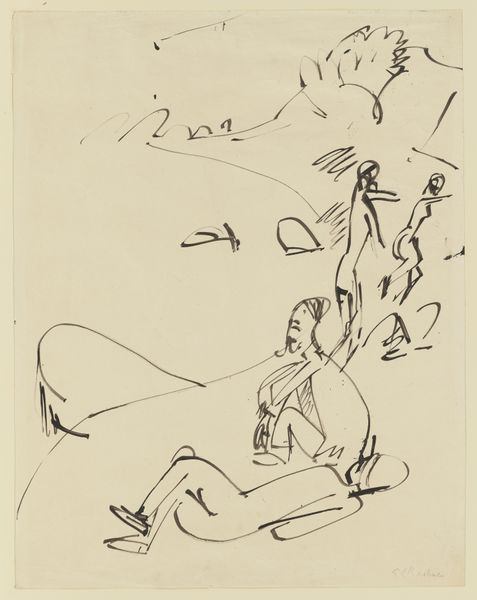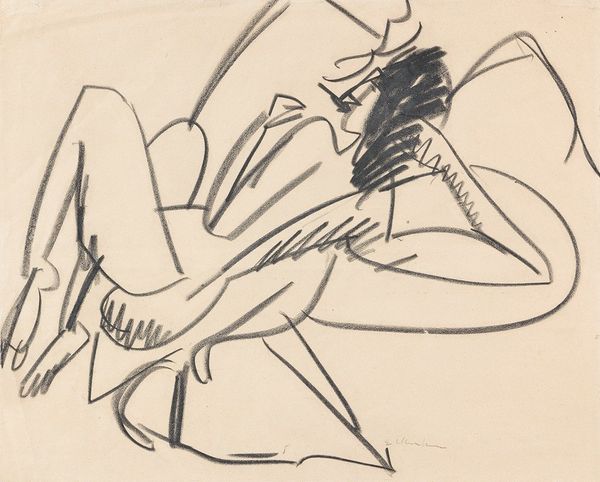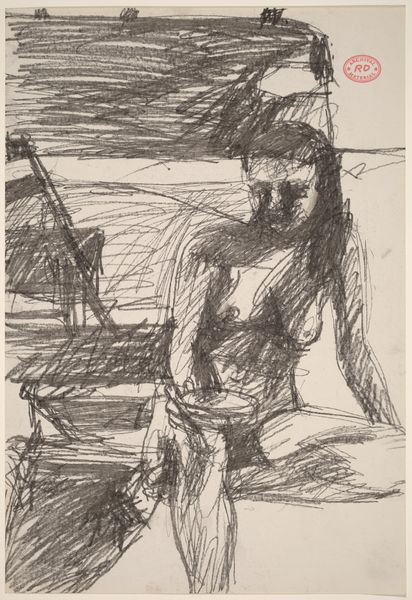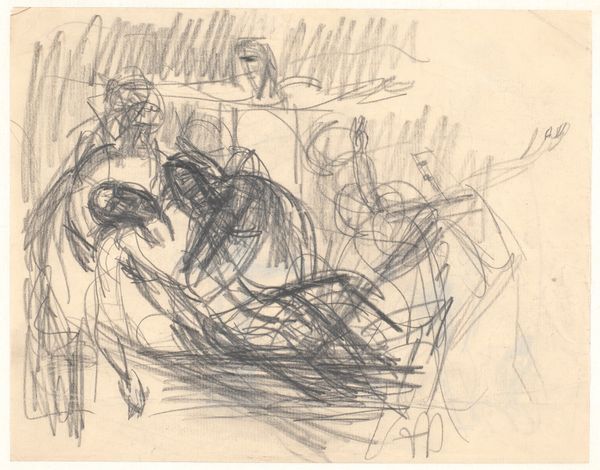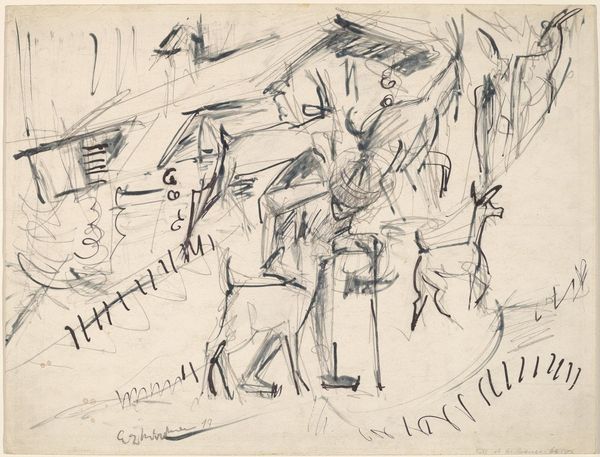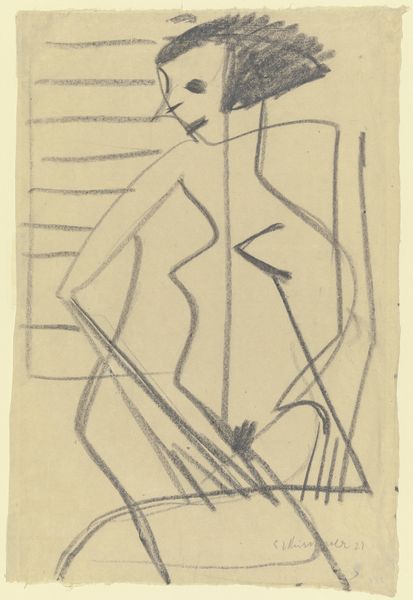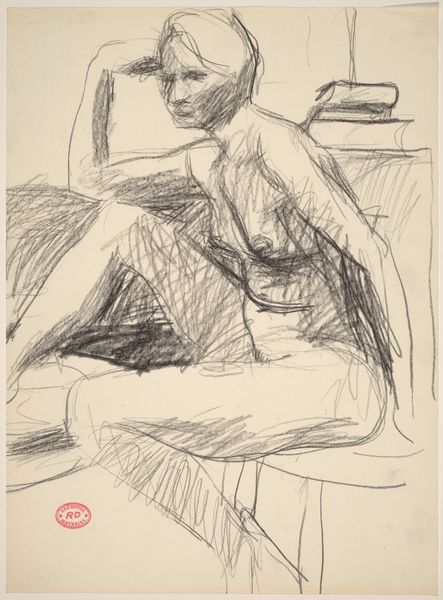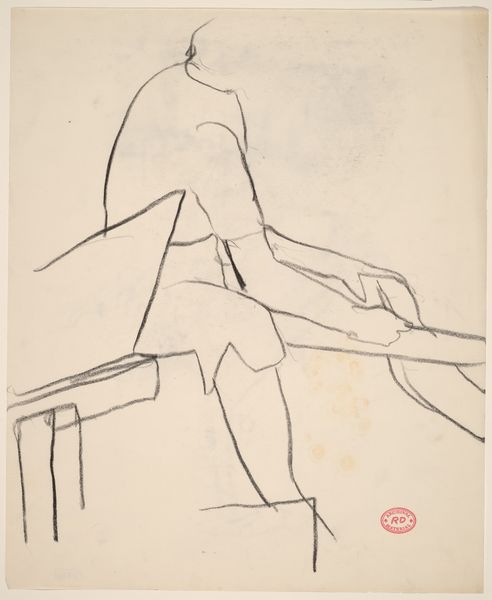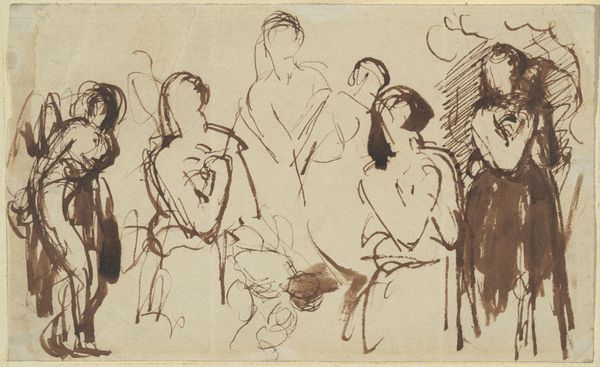
drawing, ink, chalk
#
drawing
#
figuration
#
ink
#
expressionism
#
chalk
#
genre-painting
Copyright: Public Domain
Editor: We're looking at "Tänzerin vor einem Flügel," or "Dancer before a Piano," a drawing made with ink and chalk by Ernst Ludwig Kirchner around 1924, housed here at the Städel Museum. I’m immediately struck by how raw the materials feel; you can practically see the artist's hand at work. What draws your attention to this piece? Curator: It's precisely that "rawness" that captures the social realities of the time. Expressionist works like this pushed against academic refinement. It challenges the established hierarchy. The materials – chalk, ink, paper – are all relatively inexpensive and easily accessible. What does this tell us about the accessibility of art creation at this moment? Editor: That artmaking could become more democratized perhaps? Instead of oils and canvas that might have required extensive training or financial backing, these were sketches of modern life captured almost on the fly. Curator: Precisely! Think about the labour involved too. There's an urgency in the line, reflecting the hurried pace of modern life. This drawing, created with what many considered disposable materials, now hangs in a prestigious museum. Where does it sit in terms of our value system, between something quickly consumed versus an object preserved and admired? What kind of market does that reveal? Editor: So, it’s not just about the image but also about what the *making* of the image signifies – labour, material access, social context...it gives a whole new dimension to considering Kirchner’s Expressionism. I definitely need to consider art's value beyond its aesthetic qualities. Curator: Exactly. Considering the materials helps unlock a deeper understanding of the art and the world in which it was produced, sold, and consumed.
Comments
No comments
Be the first to comment and join the conversation on the ultimate creative platform.
